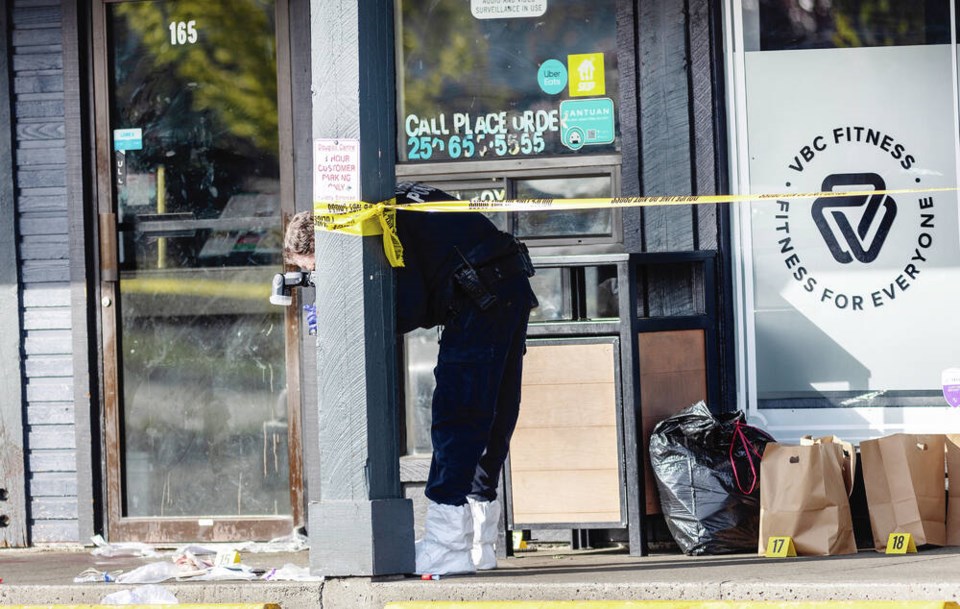A commentary by the vice-chair of Grumpy Taxpayer$ of Greater Victoria, a non-partisan citizens’ advocacy group for municipal taxpayers.
If you live in downtown Victoria and are frequently awakened in the middle of the night, you quickly learn to distinguish different emergency vehicles.
Fire trucks belt out a cascading whine and ambulances a frantic, high-pitched sound. Police cars blast shorter, rapid, alarming bursts and occasional short belching sounds.
Public safety has understandably been at the forefront of concerns for many British Columbians in recent years, spurring sizeable protests in several cities, including Victoria, Duncan and Nanaimo.
Within a few months, Save Our Streets (SOS), a coalition of businesses, community organizations and citizen groups, has doubled membership as towns and businesses grapple with theft, vandalism and street disorder.
Residents are demanding governments focus on crime prevention and community safety and are finally being heard. Without adequate peace and order, it’s difficult to deliver good local government.
So it’s notable that the Victoria and Esquimalt Police Departments’ $72.1-million budget, a 6.86 per cent hike over last year, was approved in its entirety without the usual protracted rancour.
There’s now a municipal plan on community safety, albeit in one neighbourhood and not the region. Victoria council should be applauded for addressing community safety in the 2023-26 Strategic Plan.
Last summer, a blue-ribbon Community Safety and Well-Being panel, which includes the mayor, police and fire chiefs, medical health officer and others, was struck and will report in September.
Finance Minister Katrine Conroy recently was told during a post-budget appearance that public safety was top of mind for the Greater Victoria Chamber of Commerce.
Then in mid-April, the Chamber held a community safety panel, which was timely after a spate of stabbings and two slayings downtown. It was broadly agreed collaboration across sectors is the only way to solve complex and converging crises.
Another promising initiative is sa国际传媒’s Safer Communities Action Plan, announced in November 2022.
Last spring, as one part of a multi-pronged approach to help addicts and those suffering with mental health challenges, sa国际传媒 said it was forming teams of police, prosecutors and probation officers to tackle repeat violent offenders.
The Repeat Violent Offending Intervention Initiative created 12 law enforcement hubs dedicated to investigating, monitoring and preventing acts of violence that are often committed by the same few prolific offenders. A hub was created in Victoria last May.
Some $16 million will be invested over three years.
sa国际传媒 Solicitor General Mike Farnworth is examining the expansion of the Vancouver Island Integrated Major Crime Unit to include all Island communities.
There are also recent improvements to sa国际传媒’s bail system that came into effect in January. The provinces, municipalities, chiefs of police and the public have been railing about catch-and-release bail provisions for several years.
In December legislative amendments were made to the Criminal Code. The changes will make it more onerous for accused persons to get bail if it is alleged that they engaged in serious violent offences involving weapons, and specific firearms offences. An accused will be detained while awaiting trial.
New legislation is rarely perfect — civil rights groups, legal experts and prisoner rights’ advocates voiced concerns — so the feds plan to review the impact of Bill C-48 in a few years.
But as a result of bail reform there will probably be an increased number of accused needing housing in provincial jails.
These changes will likely impact the Vancouver Island Regional Correctional Centre, a medium security institution that houses offenders sentenced to two years less a day and those on remand.
The 207 cells at this hoosegow are occupied most of the time.
The average daily count varied from 229 to 273 inmates between 2018 and 2022, according to the province. Most recently the average length of stay for sentenced offenders was only 60 days, and for those on remand, just 57.
But with the population of the South Island booming — estimated at 450,000 — it also raises questions about sufficient capacity. Some of the Wilkinson Road jail dates back a century and is even recognized in sa国际传媒’s Historic Places for its heritage value.
It takes years to plan, replace or expand a correctional centre. A new replacement for the 200-bed Nanaimo Correctional Centre will open this year, but planning began years ago for the $167-million facility.
Are critics right that the province didn’t go far enough addressing safety in the provincial budget?
Why isn’t the province making it a priority to draft a feasibility study on expanding the local lock-up?
Should the city’s community-safety leadership be urging them to do so? Should local mayors speak with one voice on public safety in the region?
Improved public safety measures to date by all levels of government are encouraging.
Let’s hope the stage is set for progress on collectively addressing street crime in Greater Victoria.
Everyone sleeps better when it’s quieter at night.



